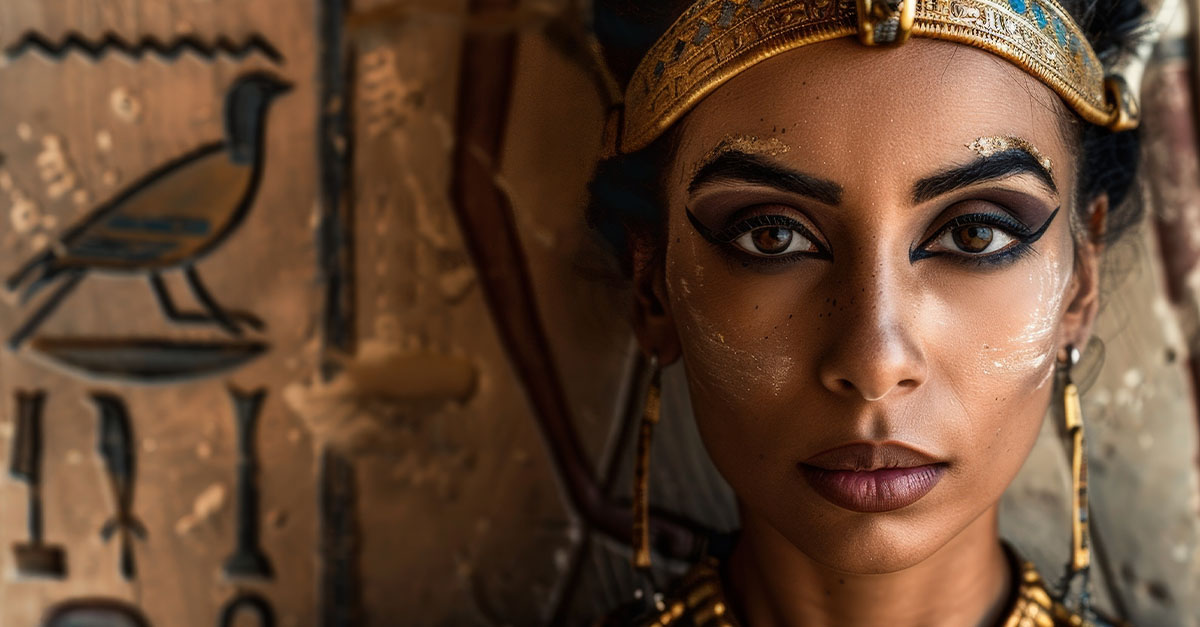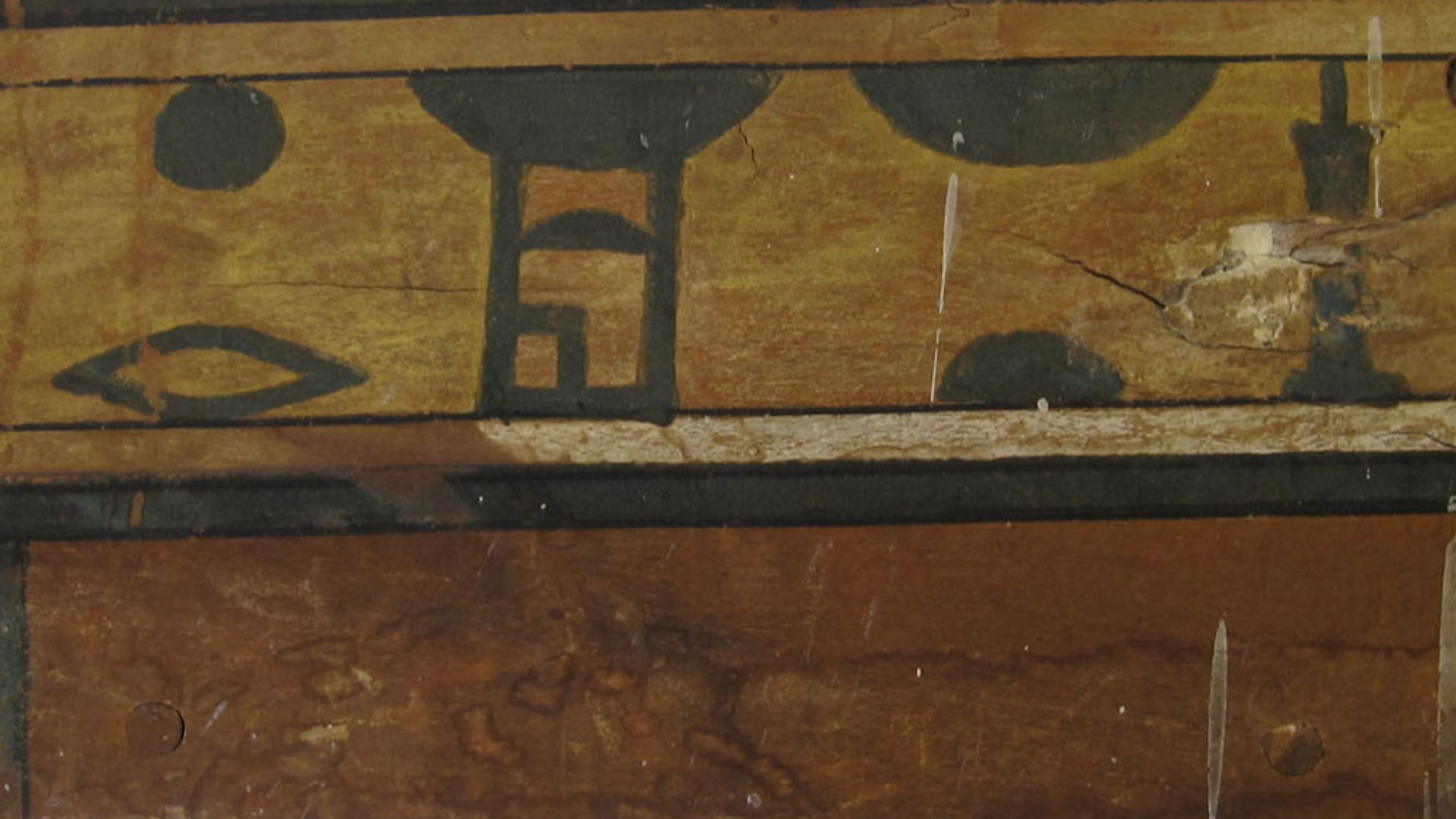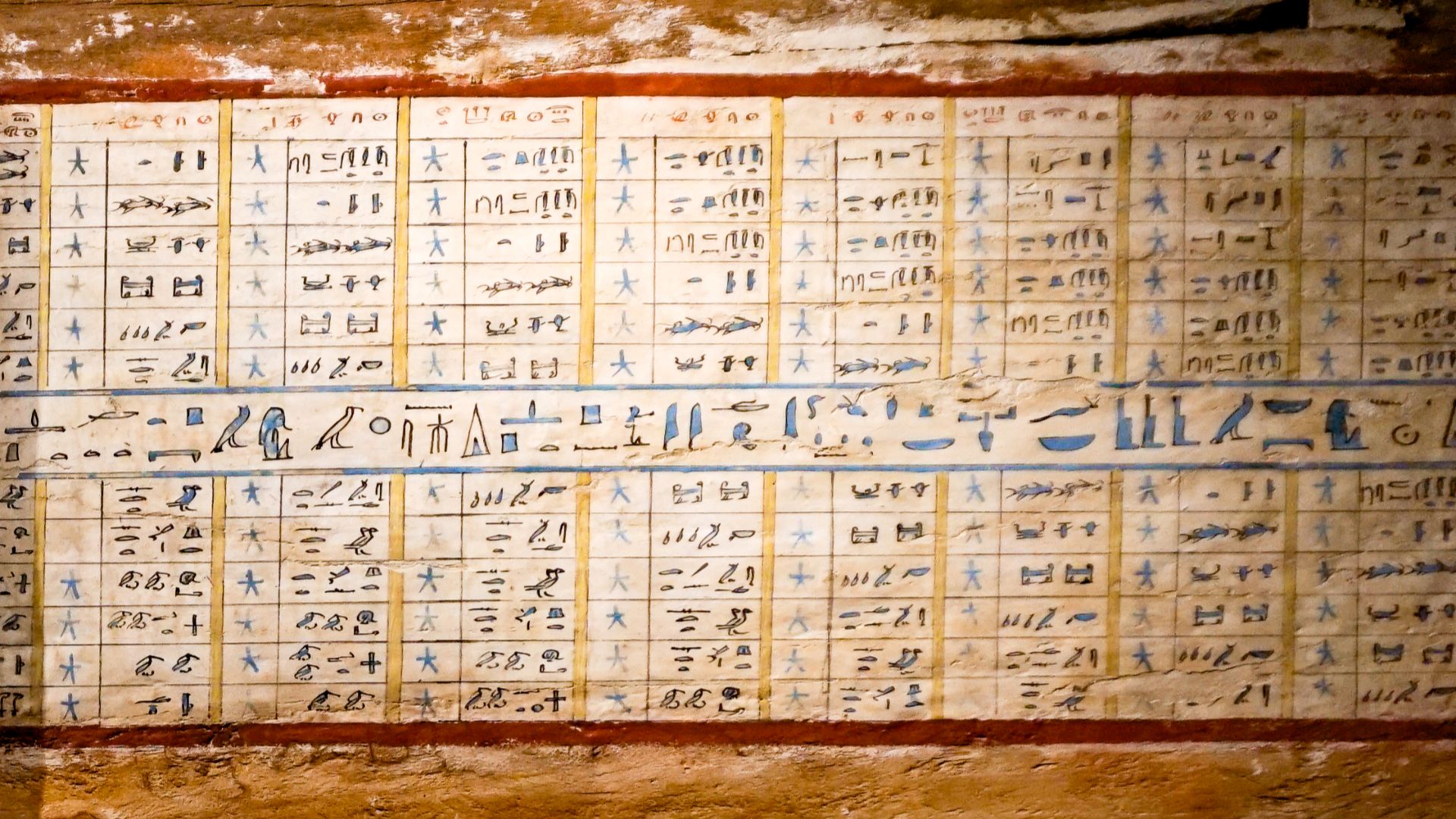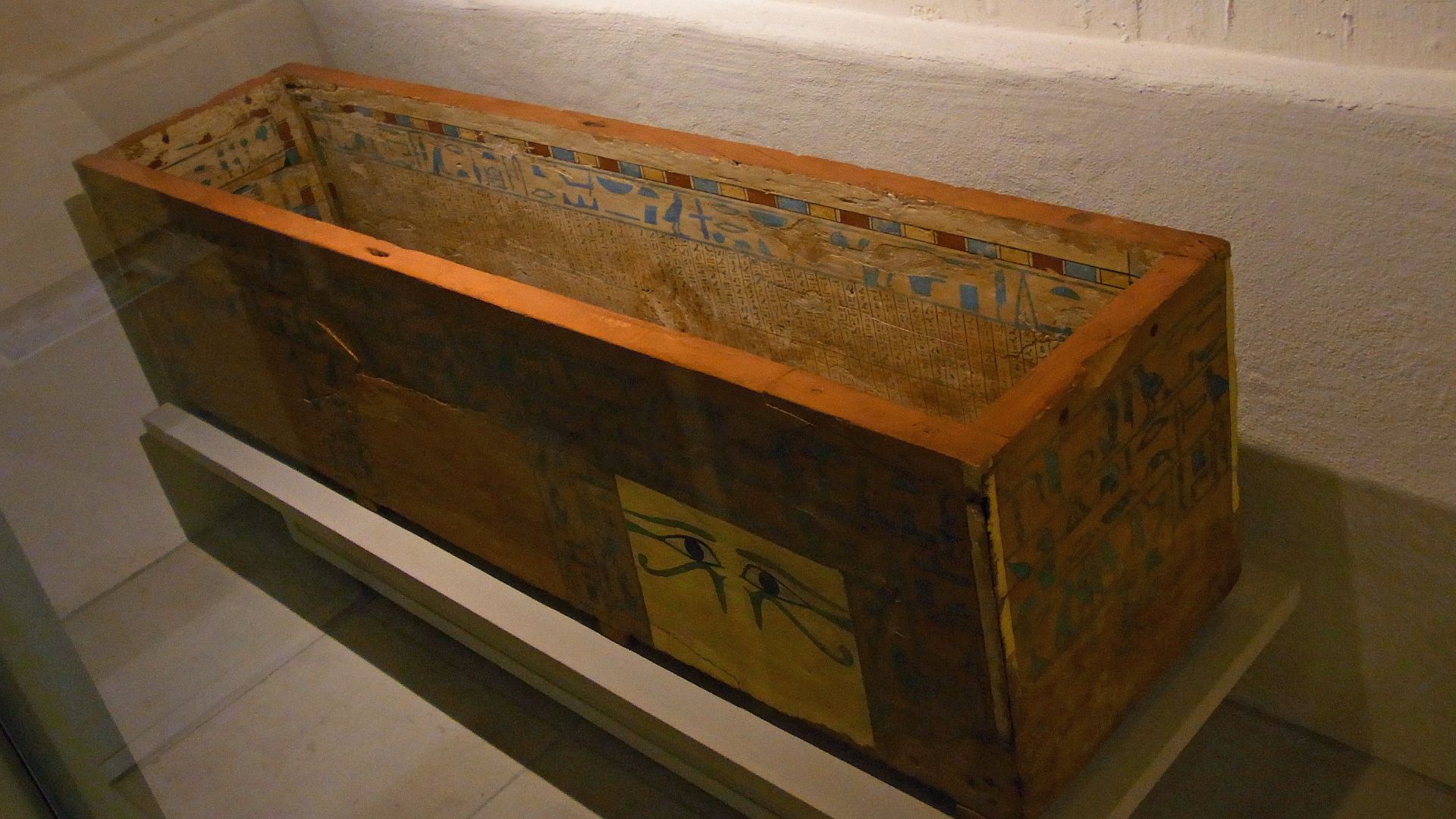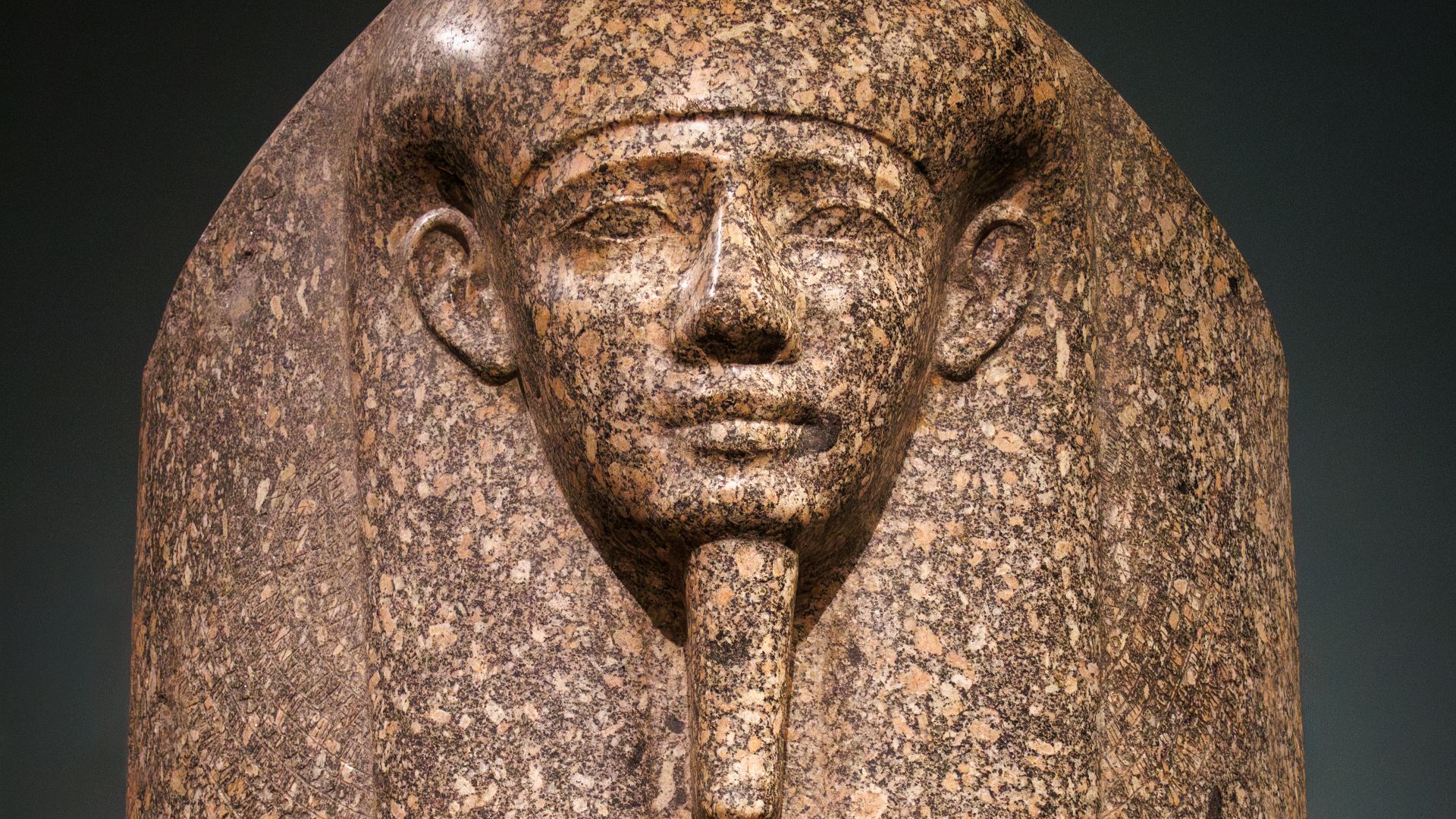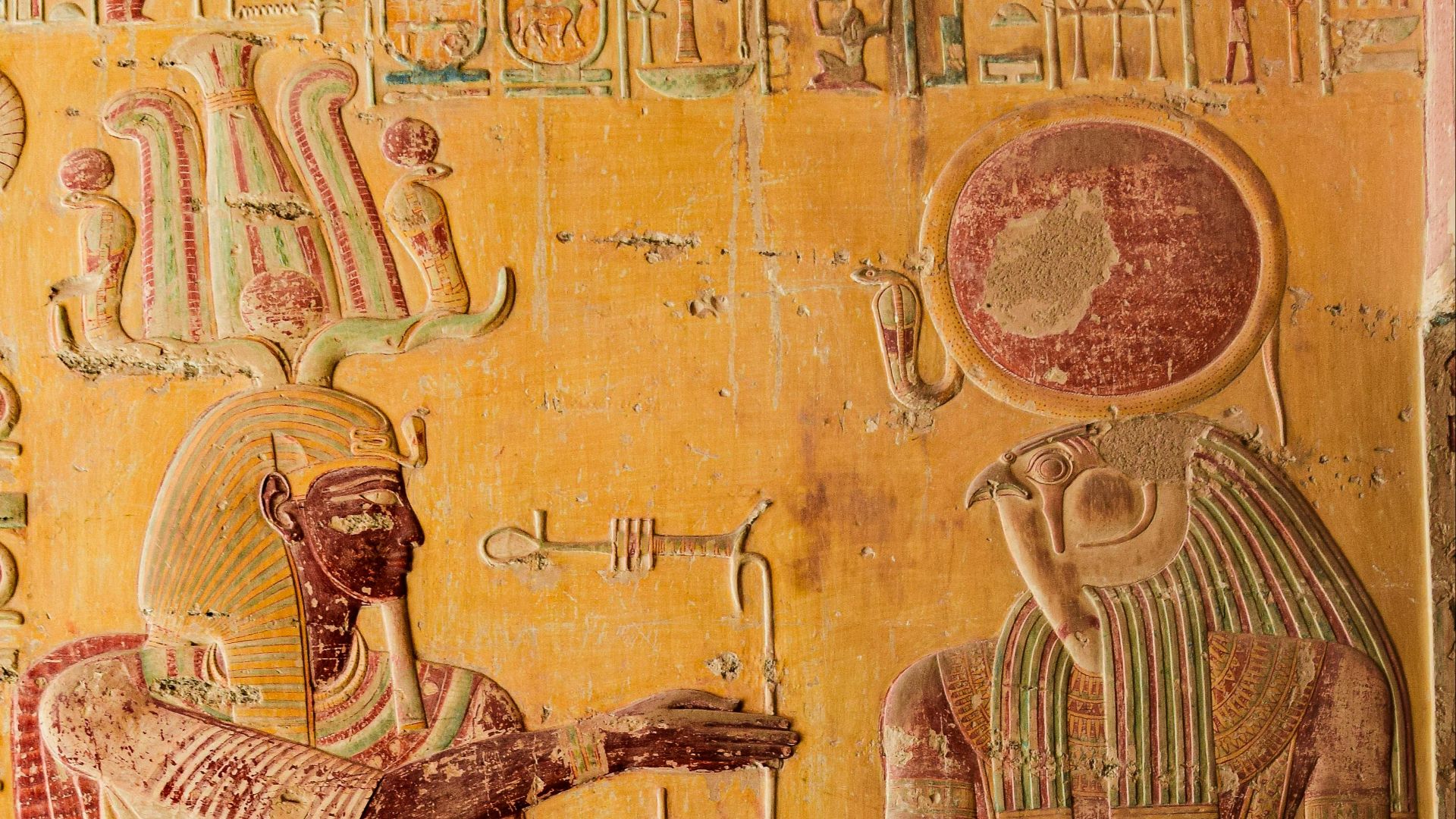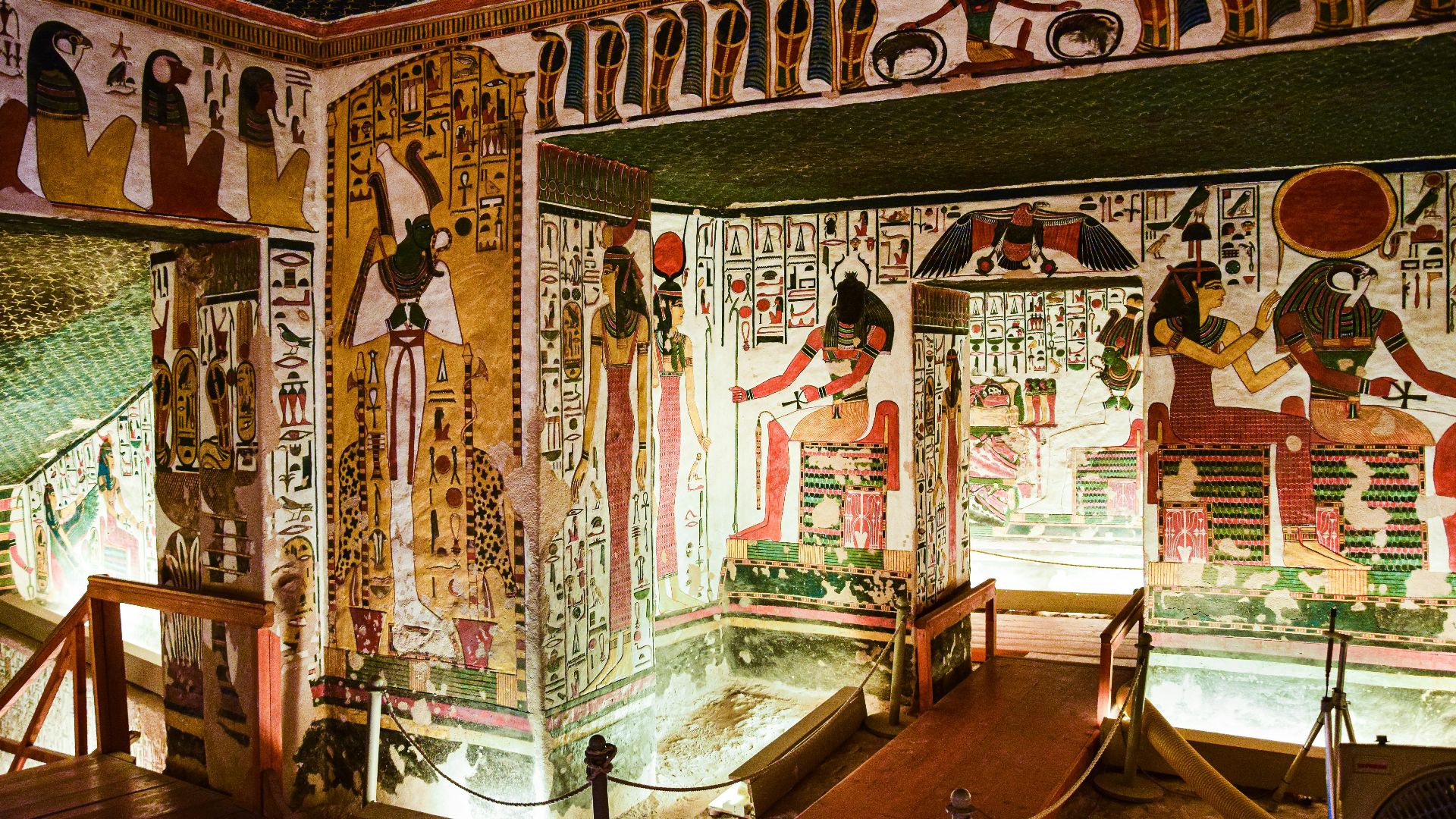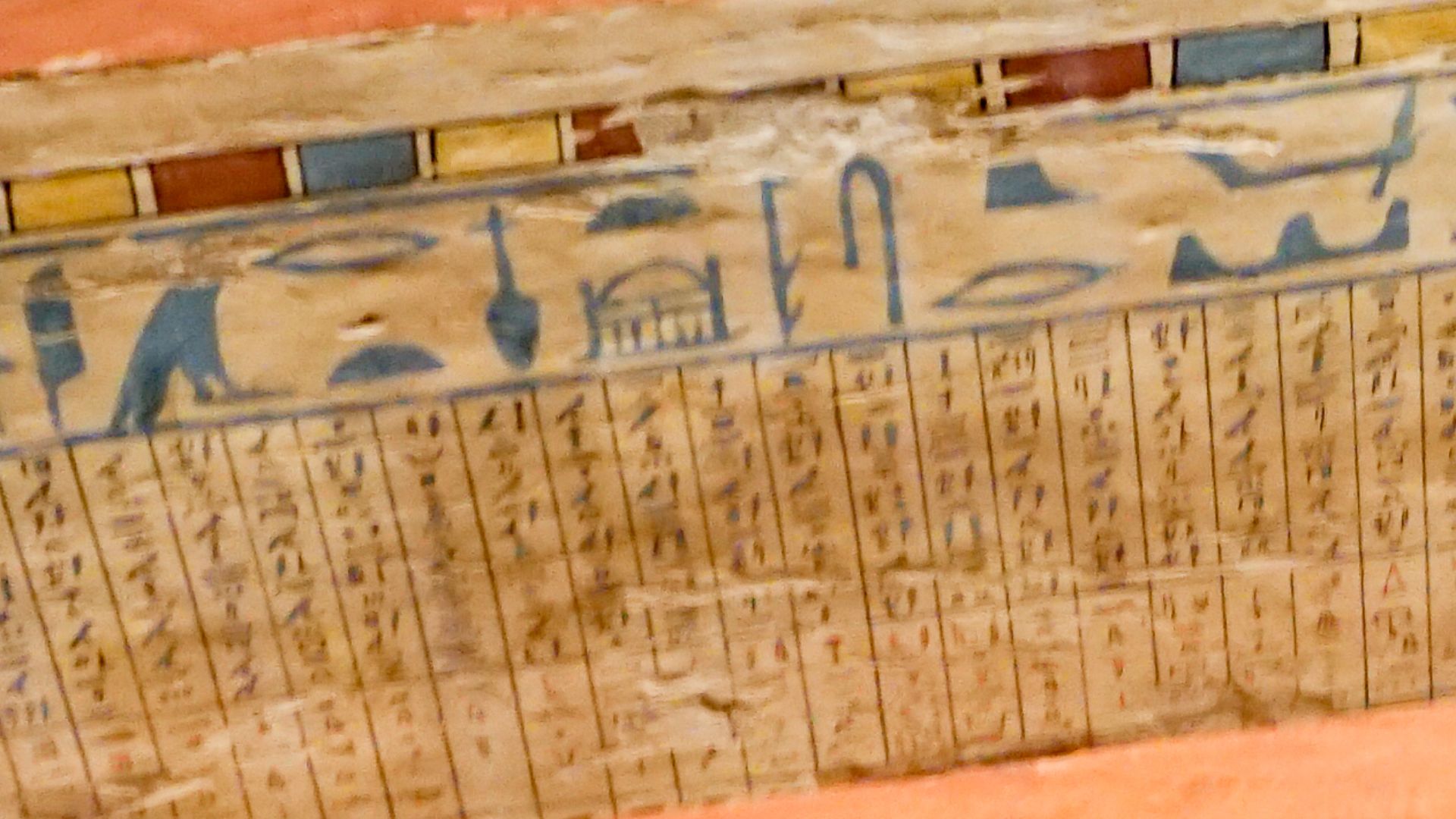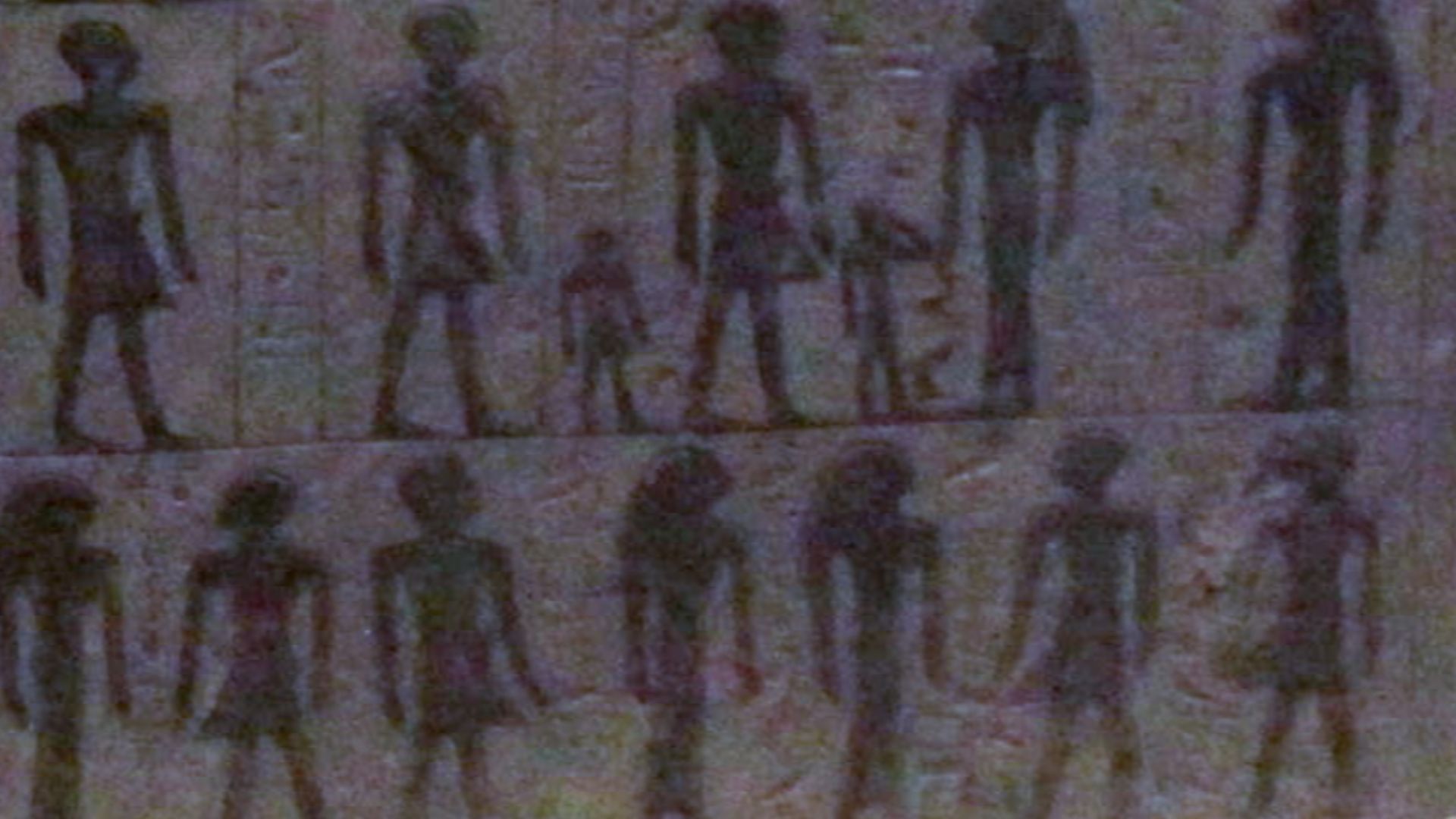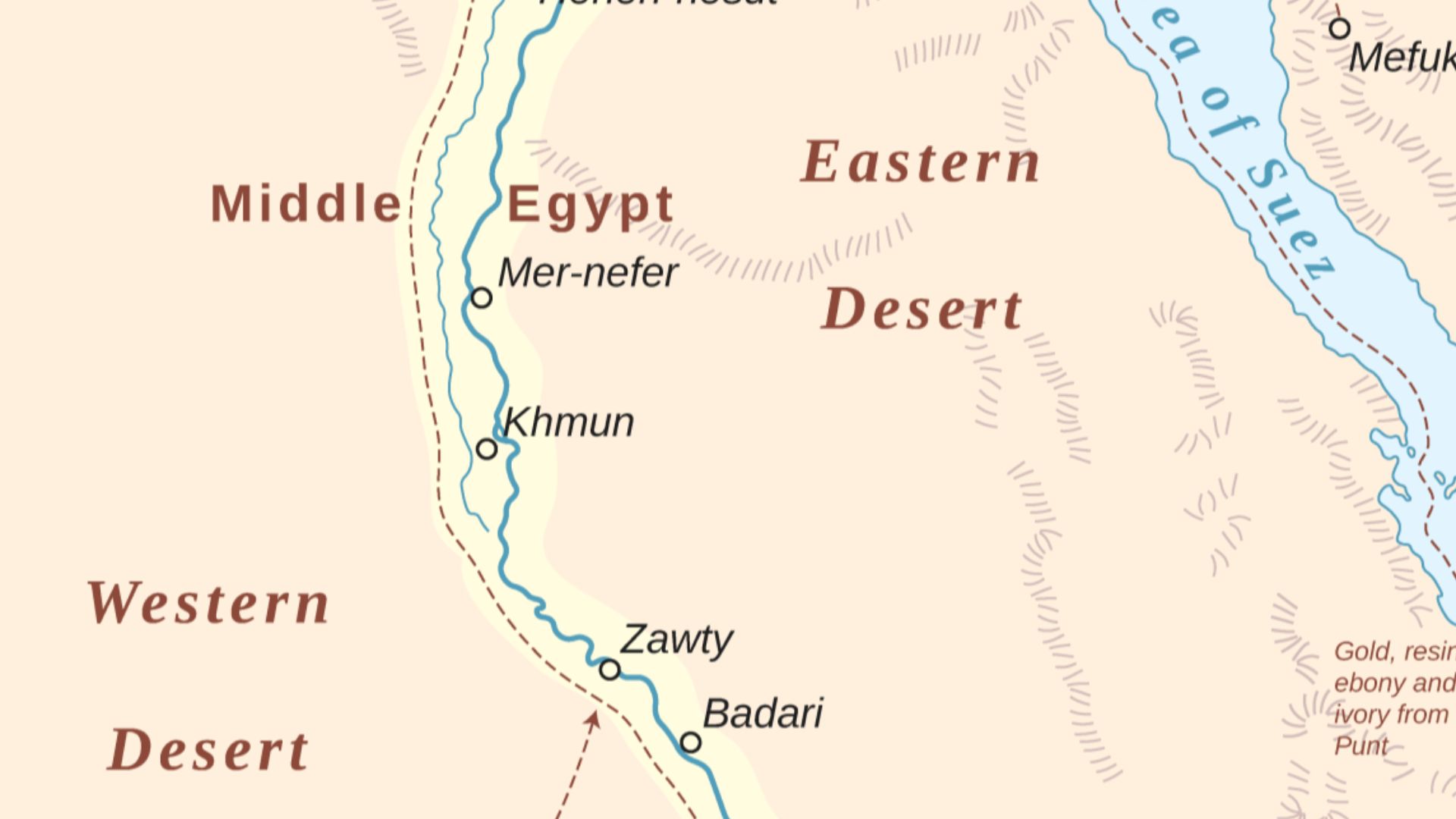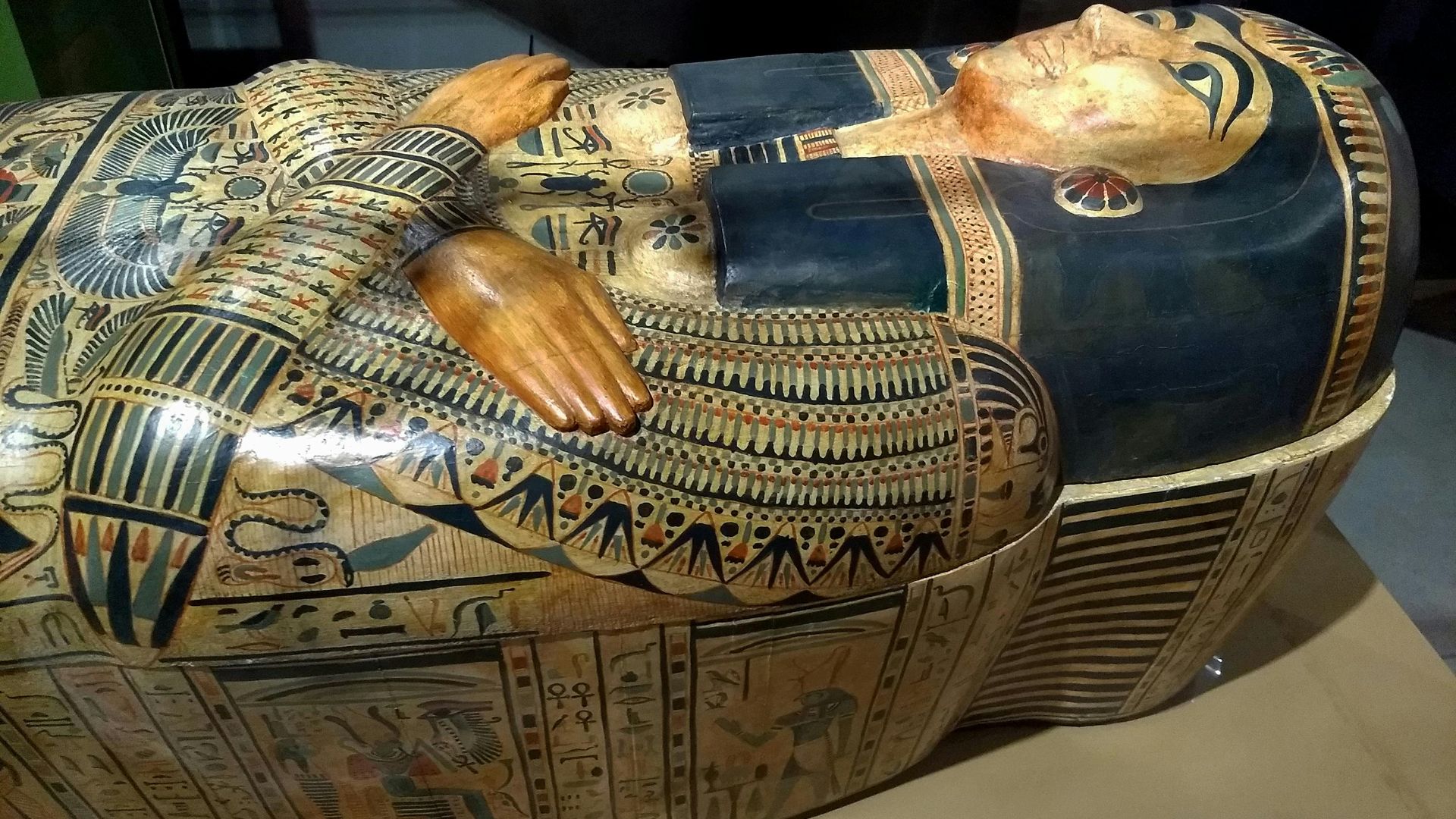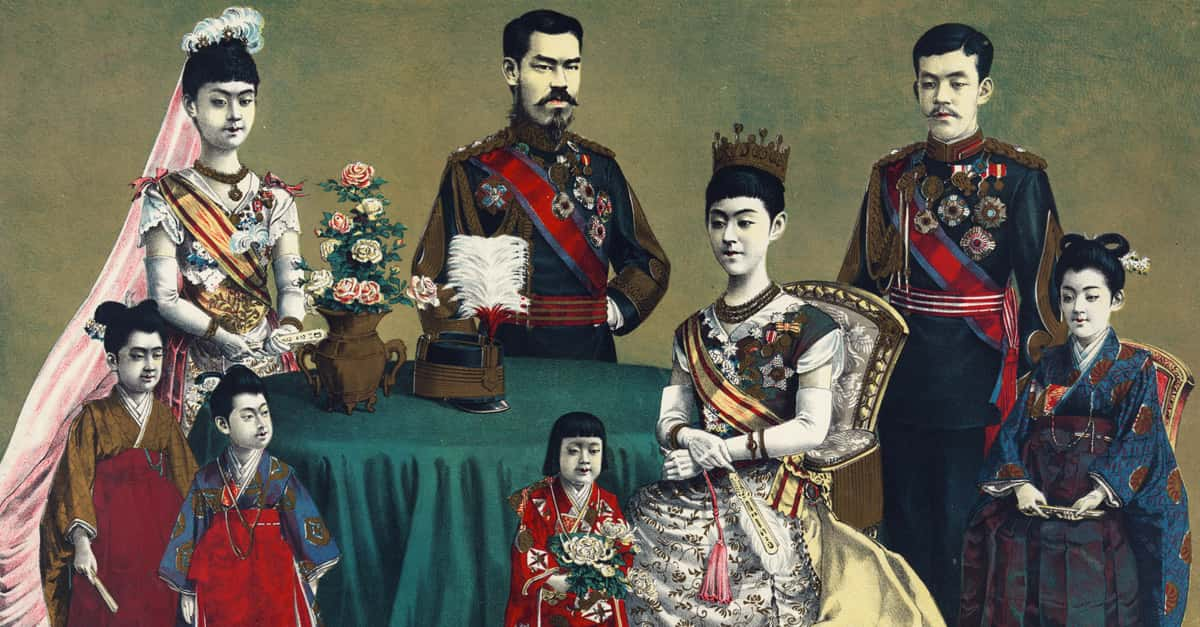A Hidden Tomb Beneath Asyut
Archaeologists excavated 50 feet into the earth to uncover Idi’s burial chamber. The tomb was located beneath the shaft of her father’s massive non-royal tomb. The discovery was made during a cleaning mission in Asyut, Egypt—and has revealed rare insight on the funerary customs for women during Egypt’s Middle Kingdom.
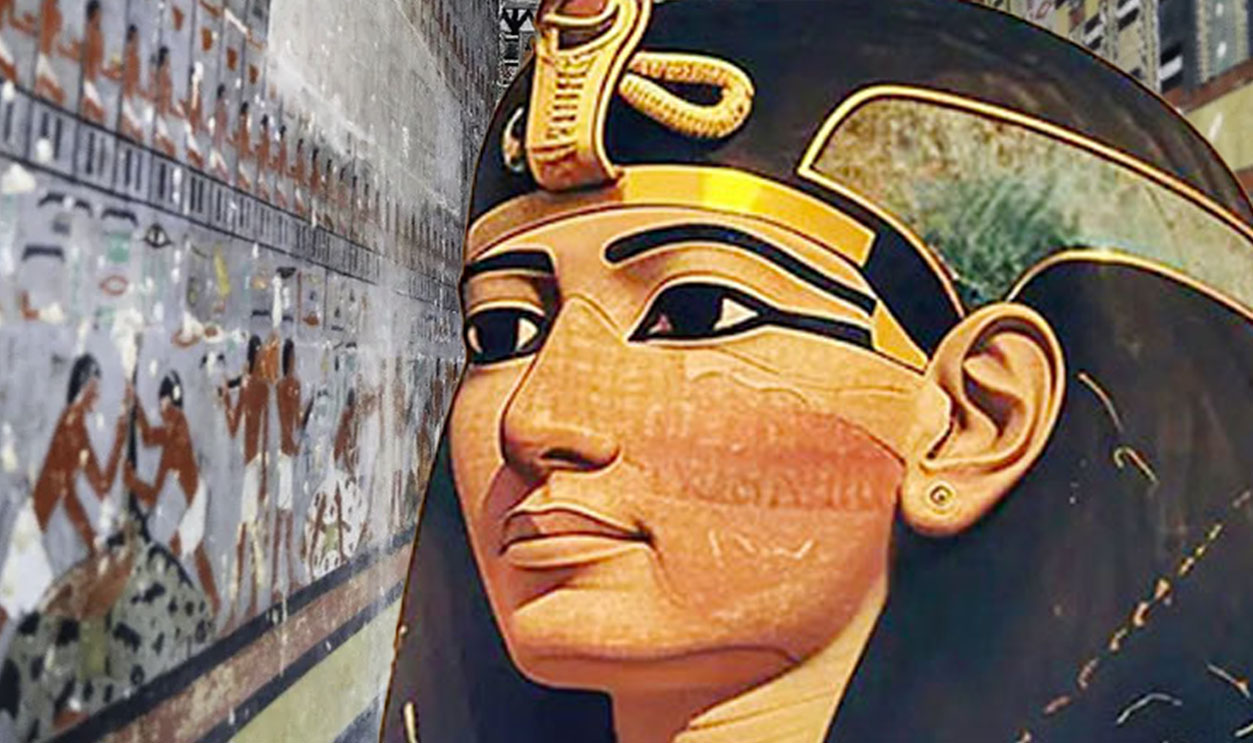
Daughter Of A Governor
Idi was the only daughter of Djefaihapi, governor of Asyut under Pharaoh Senusret I. Her father’s tomb was the largest non-royal burial of the Middle Kingdom. Its sheer size reflects Djefaihapi’s immense power and influence over one of Egypt’s most prosperous regions. His tomb’s scale likely influenced the care taken in Idi’s own burial.
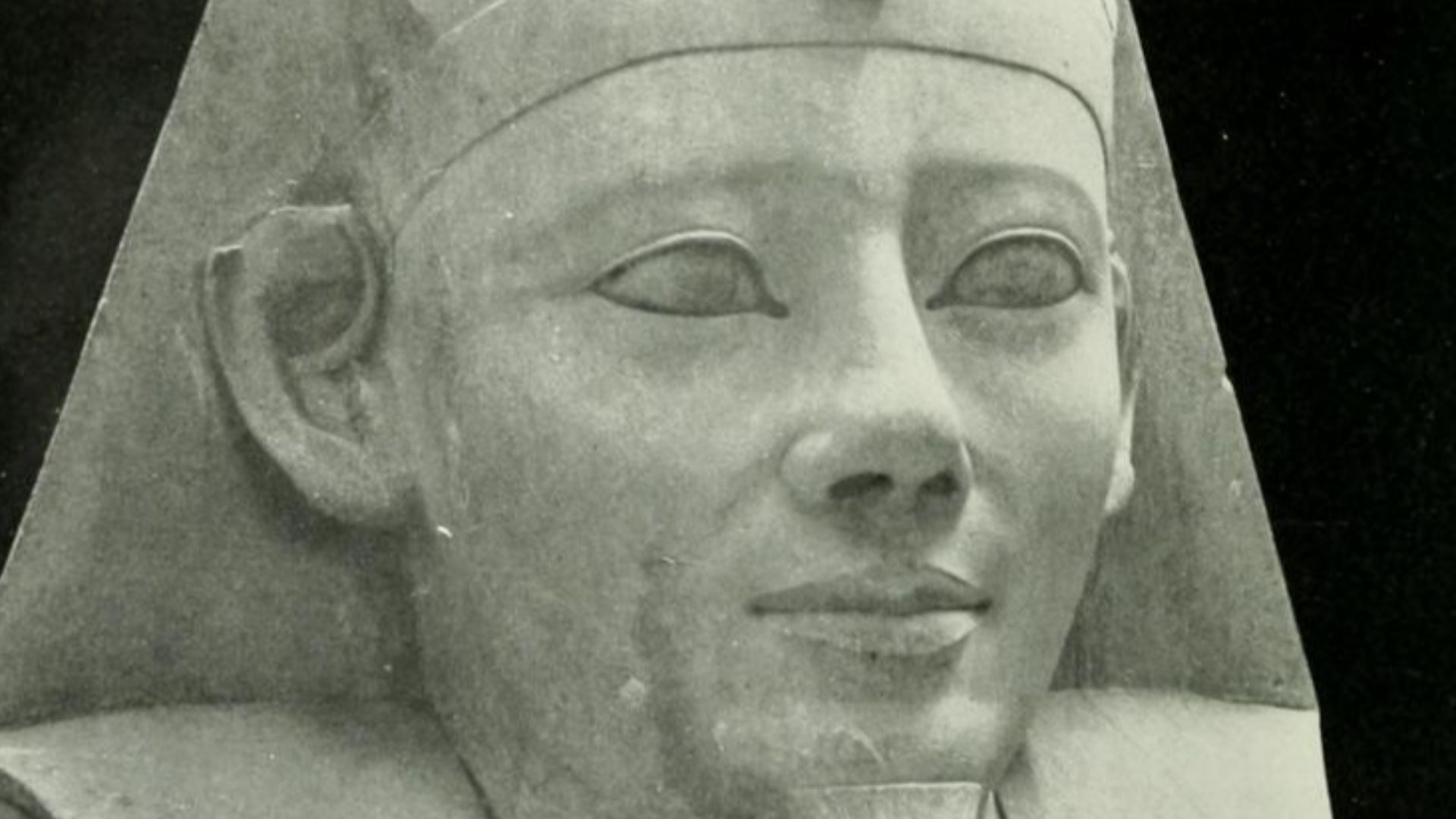 W. M. Flinders Petrie (1853-1942), Wikimedia Commons
W. M. Flinders Petrie (1853-1942), Wikimedia Commons
A Dual-Coffin Burial
Idi was laid to rest in two coffins, an inner one nested inside a larger outer coffin. The inner coffin measured 2.3 meters (7.5 feet) long; the outer measured 2.62 meters (8.6 feet). Both were richly painted and inscribed with hieroglyphs.
Intricate Funerary Texts
The coffins were covered inside and out with religious texts. These inscriptions were designed to guide Idi through the underworld. Experts consider the detail among the finest seen from Middle Kingdom burials.
Lady Of The House
Hieroglyphs refer to Idi as the “lady of the house,” a title reflecting her status. The phrase provides insight into elite domestic roles in Middle Kingdom Egypt.
Located Near Her Father
Idi’s tomb sits adjacent to her father’s grand burial site. The connection underscores the familial importance of burial placement in elite circles. It also shows the governor’s intent to keep his daughter’s memory preserved.
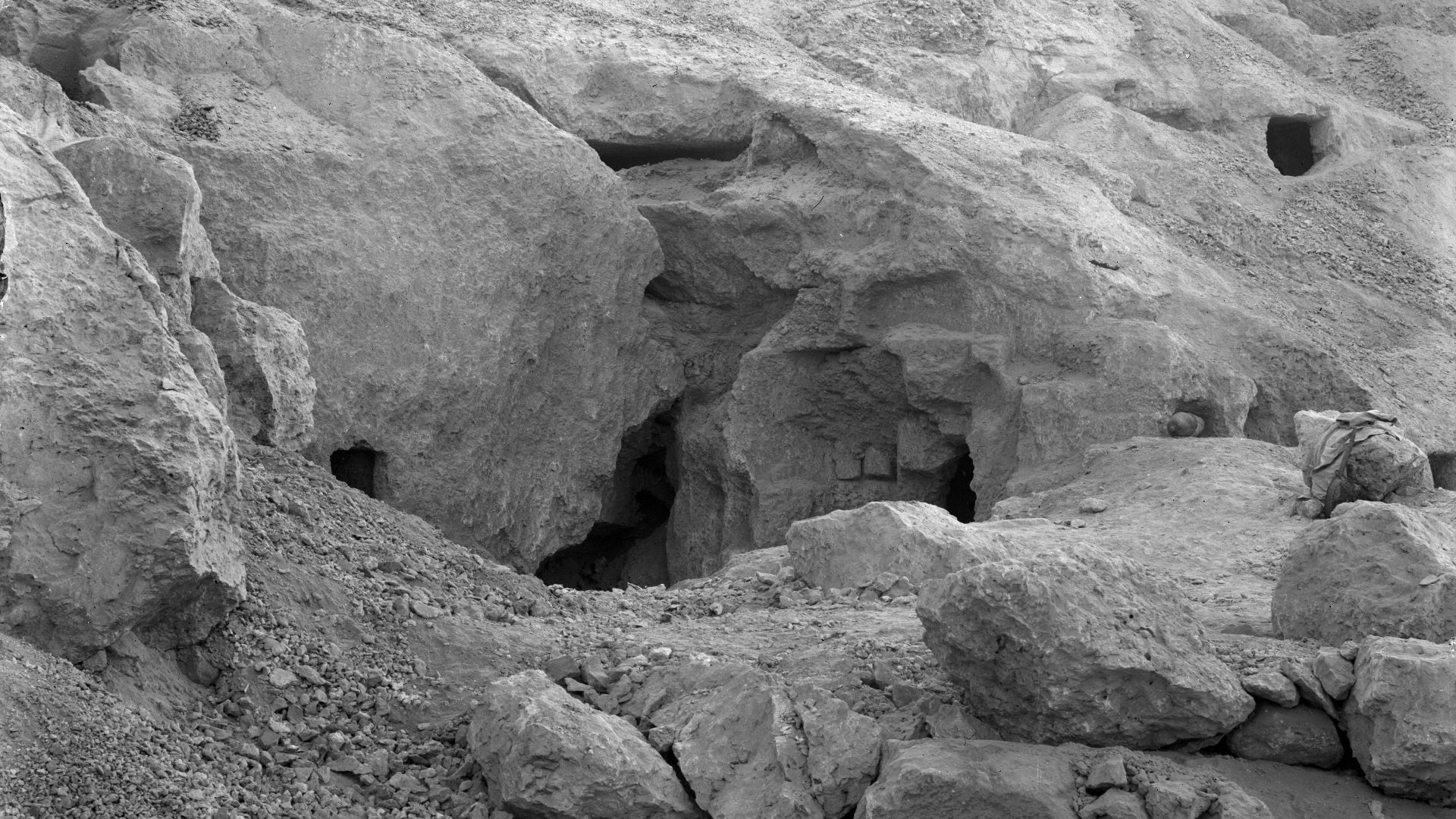 Marco Chemello (WMIT), Wikimedia Commons
Marco Chemello (WMIT), Wikimedia Commons
A Joint Egyptian-German Effort
The discovery was made by a collaboration between Egypt’s Sohag University and the Free University of Berlin. The team was conducting conservation work when they stumbled upon the chamber. Their documentation efforts are setting a modern standard for tomb excavation.
 Colin Smith on geo.hlipp.de, Wikimedia Commons
Colin Smith on geo.hlipp.de, Wikimedia Commons
A Grave Robbed In Antiquity
Idi’s tomb had been looted by ancient grave robbers. Thieves removed and dismembered her mummy and damaged key artifacts. Despite this, enough material survived to provide valuable historical insights.
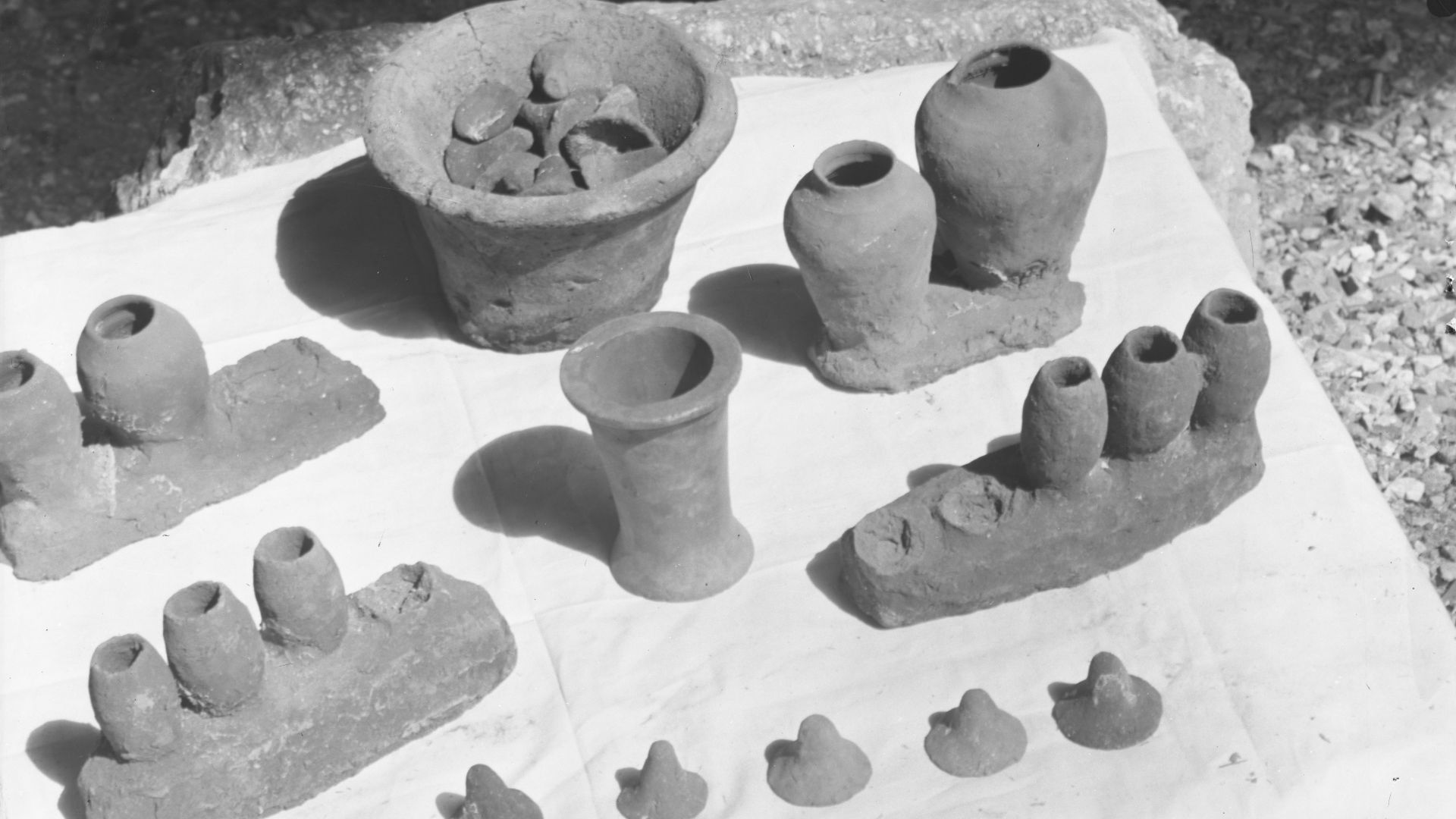 Virginio Rosa, Wikimedia Commons
Virginio Rosa, Wikimedia Commons
A Sarcophagus Lid Remained
The lid of the inner coffin was still inside the burial chamber. This piece helped confirm the tomb’s intact nature despite earlier looting. Its inscriptions and design offer additional funerary symbolism.
Canopic Jars Were Discovered
A box containing canopic jars was found inside the chamber. These jars once held Idi’s embalmed internal organs. The jars were damaged by thieves, but remain critical to understanding her burial.
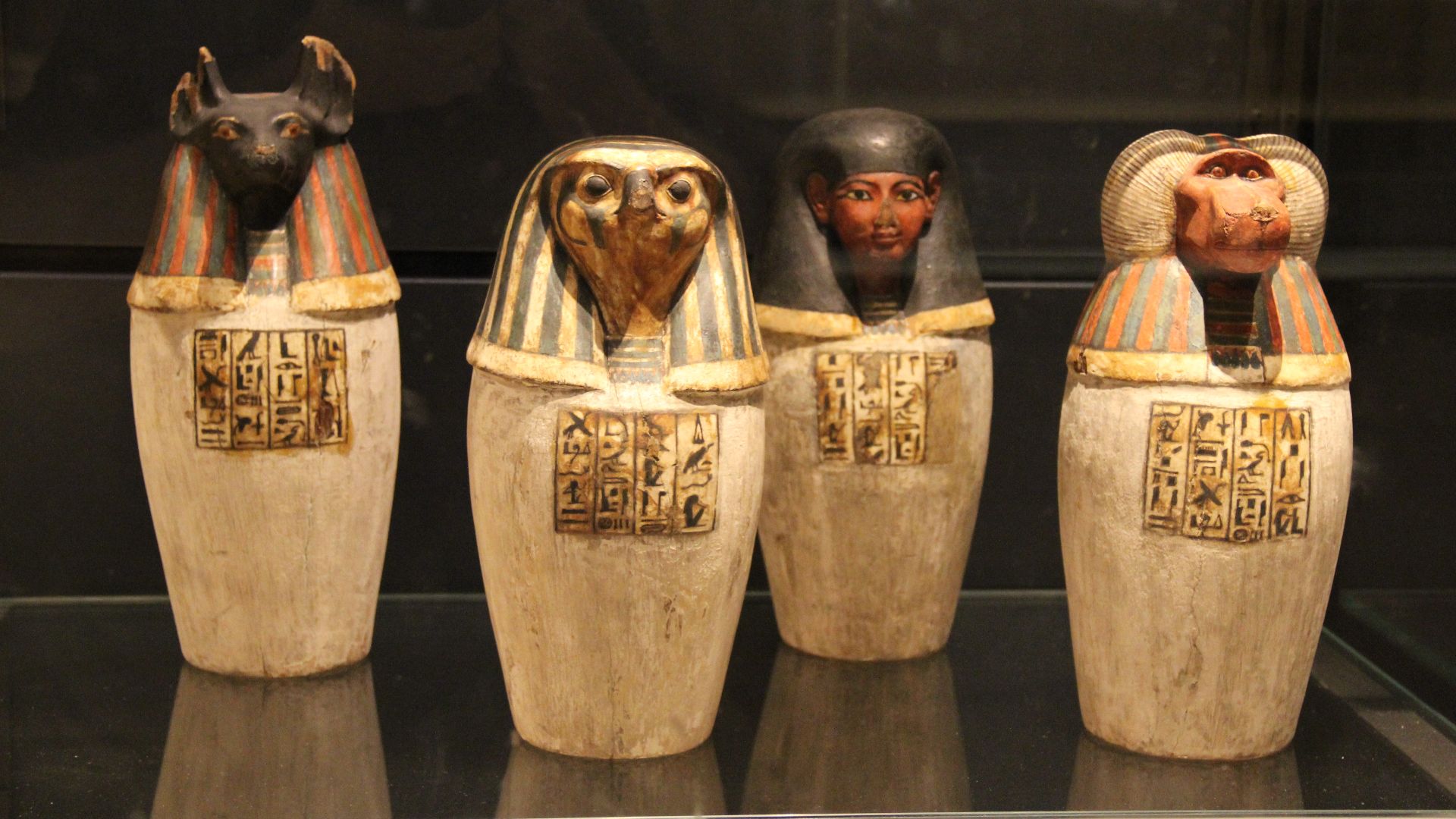 Gary Todd from Xinzheng, China, Wikimedia Commons
Gary Todd from Xinzheng, China, Wikimedia Commons
Two Painted Figurines Found
Researchers recovered two painted wooden statuettes from the tomb. One may represent Idi herself, standing upright in a traditional pose. These are rare examples of personalized funerary art from the era.
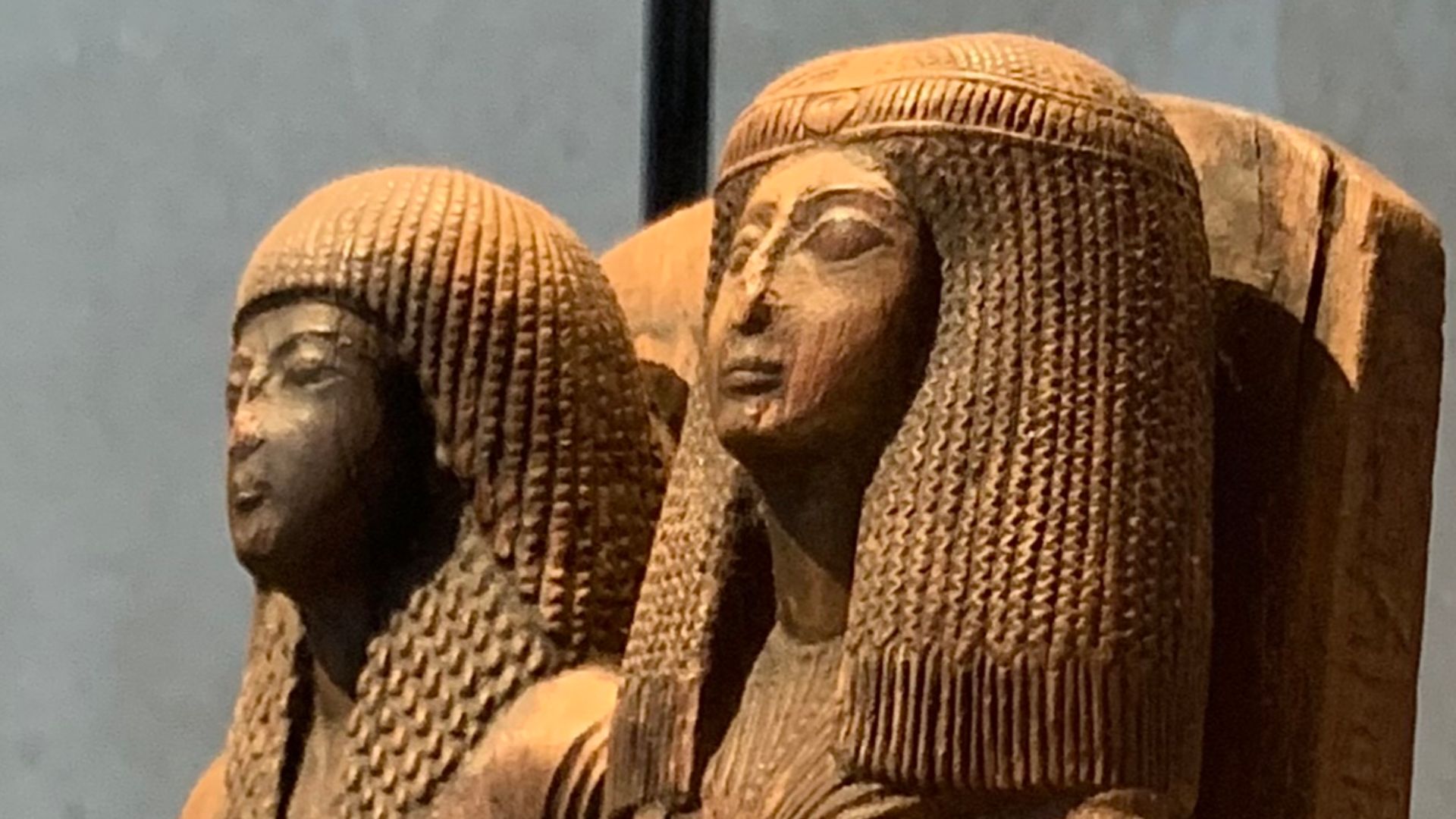 Neoclassicism Enthusiast, Wikimedia Commons
Neoclassicism Enthusiast, Wikimedia Commons
A Unique Female Burial
Idi’s tomb is significant because elite female burials are less commonly found. Her title, grave goods, and proximity to power offer rare insights. This discovery adds to the limited record of Middle Kingdom women.
 Antonio Beato, Wikimedia Commons
Antonio Beato, Wikimedia Commons
A Tomb Shaped By Trauma
Idi’s skeleton showed signs of postmortem damage from the tomb robbers. Her bones were dismembered, and her burial arrangement disturbed. Even so, researchers were able to reconstruct much of her life story.
She Passed Young
Skeletal analysis suggests Idi passed before the age of 40. The cause of this remains unknown, but physical evidence reveals health challenges.
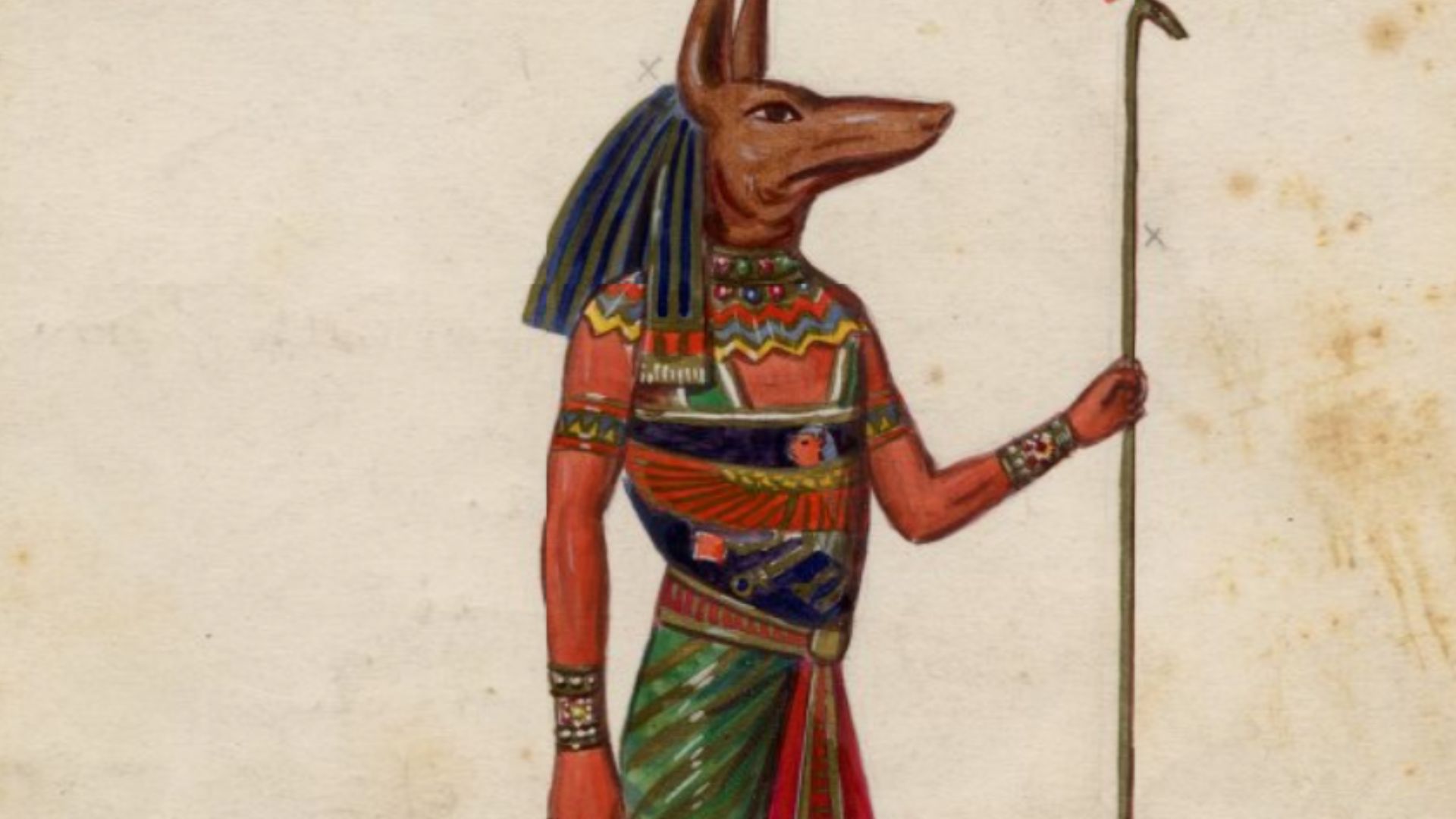 Charles Briton (d. 1884), Wikimedia Commons
Charles Briton (d. 1884), Wikimedia Commons
A Deformity In Her Foot
Idi had a congenital deformity in one of her feet. This likely affected her mobility and day-to-day quality of life. The discovery humanizes a woman who lived over four millennia ago.
A Mirror Of Her Era
Idi’s burial reflects the beliefs, rituals, and aesthetics of the Middle Kingdom. Scholars praise the paintwork as evidence of cultural sophistication.
Senusret I’s Reign
Idi lived during the rule of Pharaoh Senusret I, who reigned from around 1961 to 1915 BCE. This period is part of Egypt’s 12th Dynasty and Middle Kingdom.
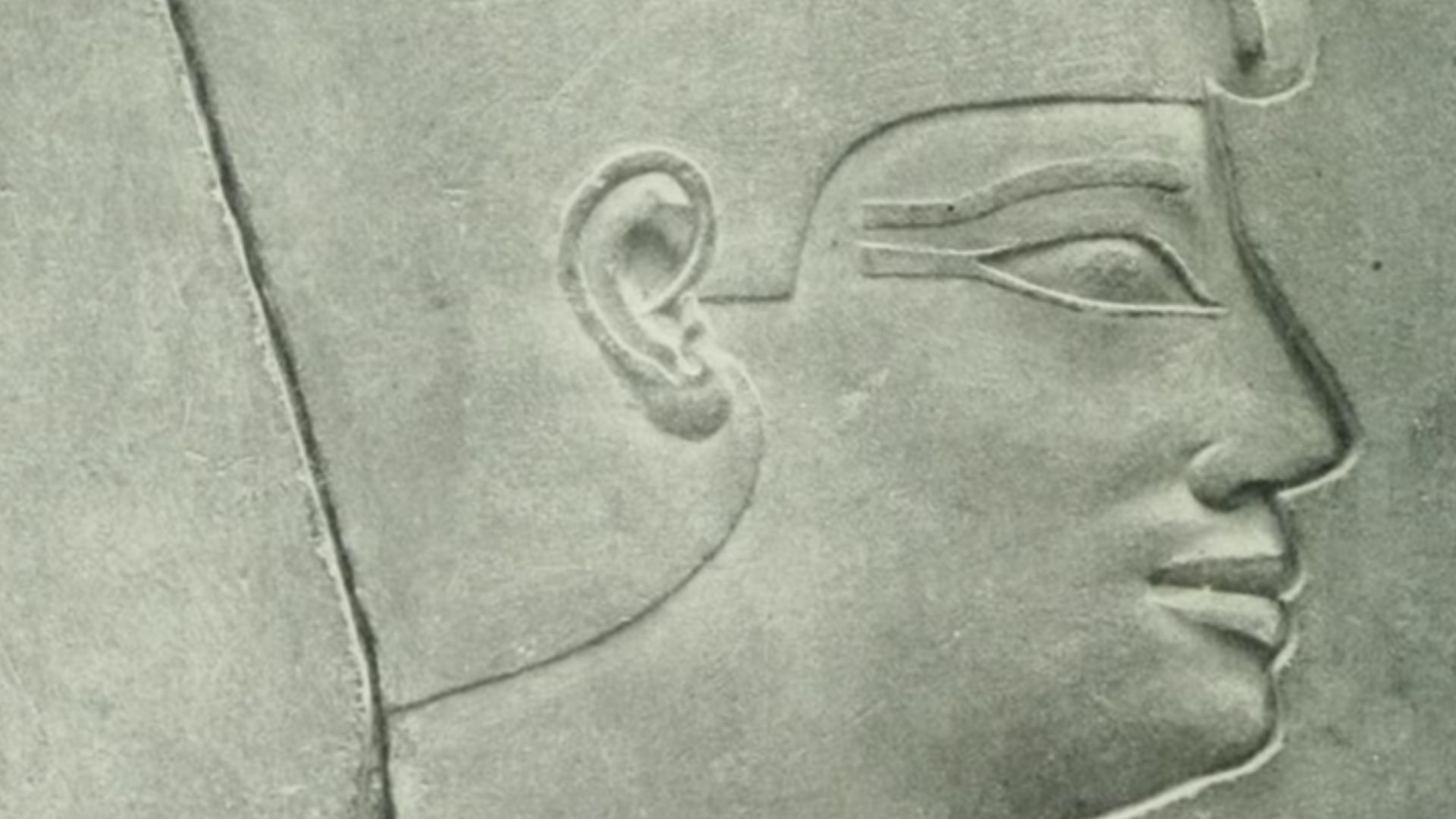 W. M. Flinders Petrie (1853-1942), Wikimedia Commons
W. M. Flinders Petrie (1853-1942), Wikimedia Commons
Supporting Cultural Heritage
Egypt’s Minister of Tourism and Antiquities praised the discovery. The ministry pledged continued support for local excavation missions. These efforts aim to document and protect the nation’s deep historical legacy.
A Study In Ancient Grief
The investment in Idi’s burial, despite her early death, reveals familial devotion. Her father’s resources ensured a tomb filled with symbolic meaning. The lavish preparation reflects emotional and spiritual priorities.
Figurines And The Soul
One of the wooden statuettes may represent Idi’s soul emerging from the tomb. Scholars believe this depiction aligns with funerary beliefs about spiritual transformation. The second figurine might show her in a marching posture.
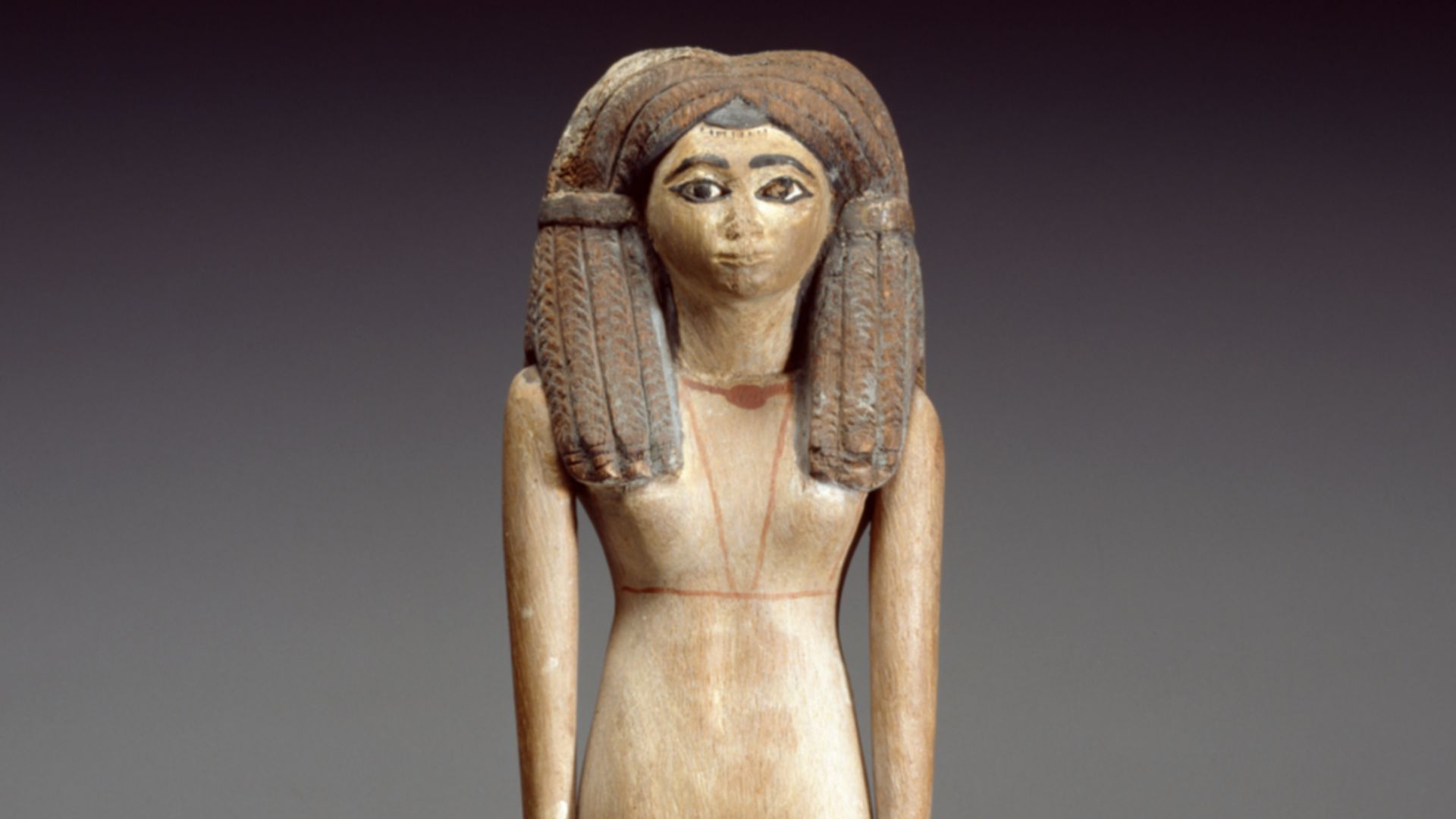 Anonymous (Egypt)Unknown author, Wikimedia Commons
Anonymous (Egypt)Unknown author, Wikimedia Commons
A Fully Painted Interior
Both coffins feature detailed internal paintings in addition to their external inscriptions. These inner artworks are meant to protect and guide the spirit. Such decoration was rare and costly, emphasizing Idi’s elite status.
Archaeological Significance Confirmed
Experts like UCLA’s Dr Kathlyn Cooney noted how rare intact Middle Kingdom coffins are. She praised the preservation and artistic detail in the find. Other Egyptologists echoed her assessment of the tomb’s historical value.
 Stephen Newton (ManosFate), Wikimedia Commons
Stephen Newton (ManosFate), Wikimedia Commons
A Long-Lost Chapter Revealed
Asyut has yielded many tombs, but few as intact or well-documented as Idi’s. Many previous finds were looted or excavated under dubious conditions. This discovery will be thoroughly recorded and analyzed.
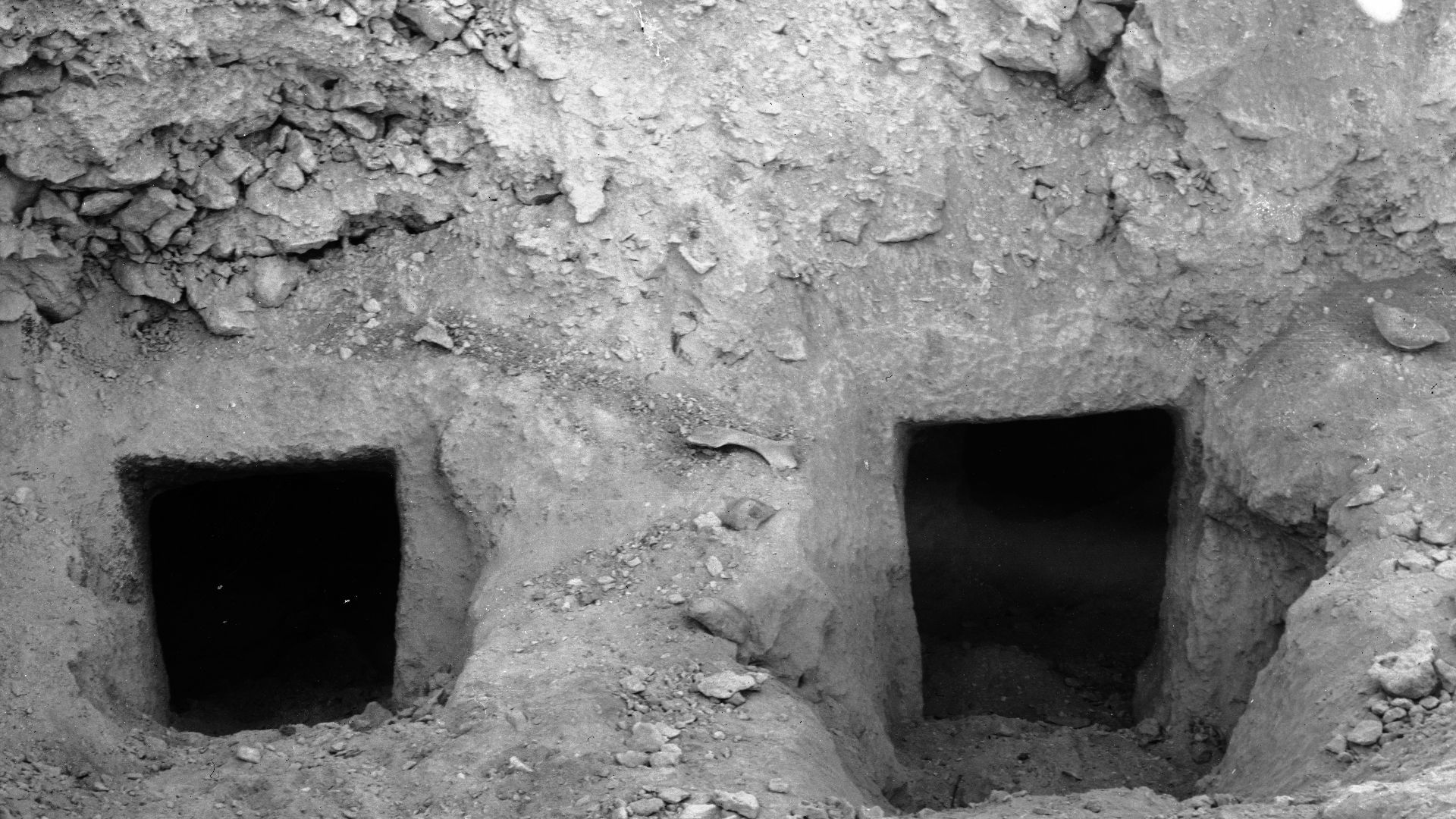 Marco Chemello (WMIT), Wikimedia Commons
Marco Chemello (WMIT), Wikimedia Commons
Valuable Despite Looting
Even in its disturbed condition, Idi’s tomb holds immense research value. Surviving artifacts and texts provide data on burial practices, gender, and family. Every fragment adds to the larger picture of Middle Kingdom life.
Modern Tools Meet Ancient Sites
The excavation is being conducted with modern archaeological standards. This includes mapping, documentation, and digital imaging.
A Legacy Preserved In Text
The coffin inscriptions serve as a legacy for Idi, written in stone and paint. They preserve her name, status, and spiritual hopes. Such texts were believed to hold magical power in the afterlife.
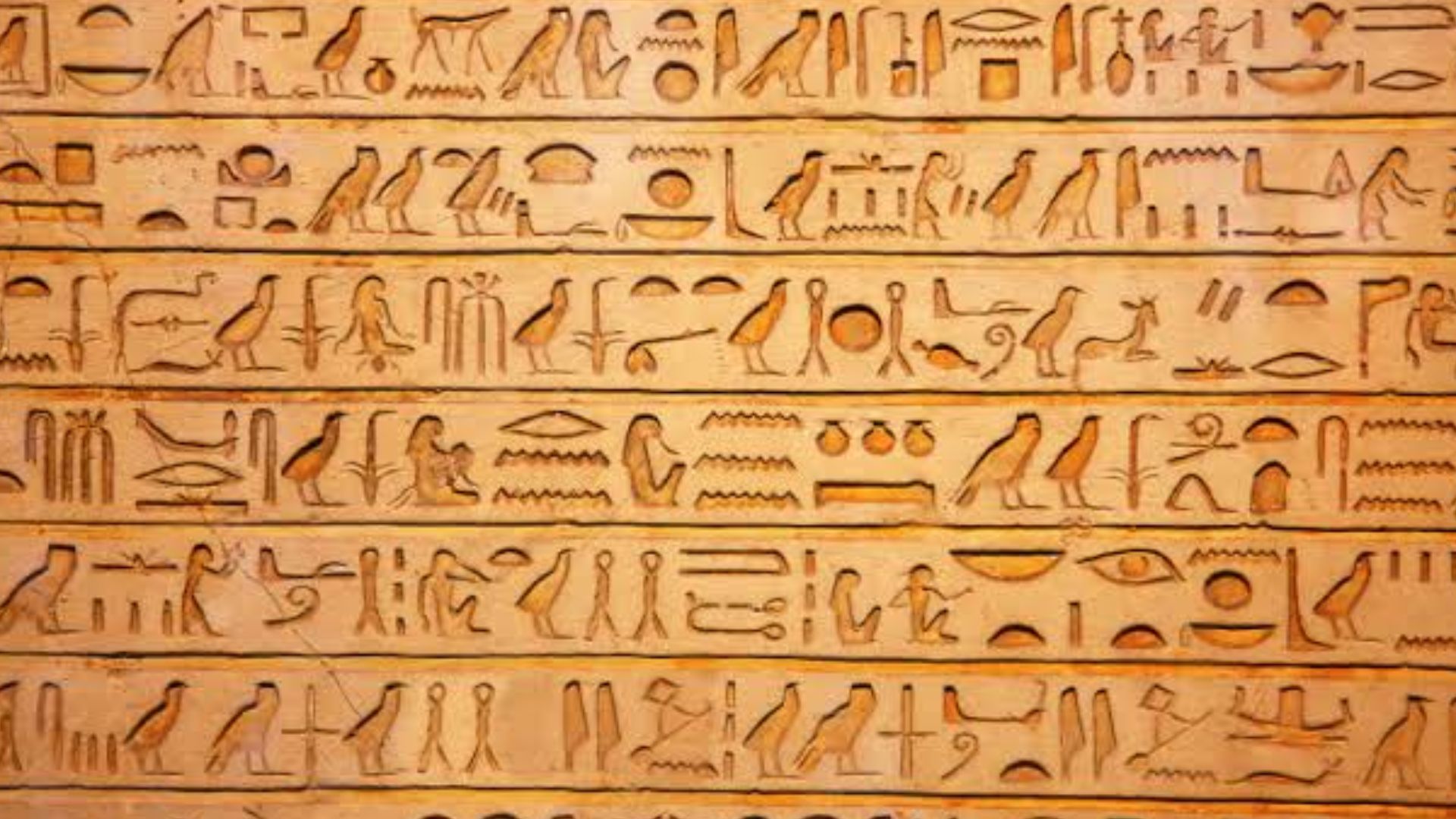 Hosni bin Park, Wikimedia Commons
Hosni bin Park, Wikimedia Commons
An Era Overlooked No Longer
The Middle Kingdom has long been overshadowed by Egypt’s better-known periods. Finds like Idi’s challenge that narrative by showcasing artistic and cultural richness. Scholars are calling for renewed attention to this era.
More Discoveries Expected
Researchers plan to continue cleaning and excavating near Idi’s tomb. They hope to uncover additional burial chambers or artifacts. These may further clarify her life and her family’s prominence.
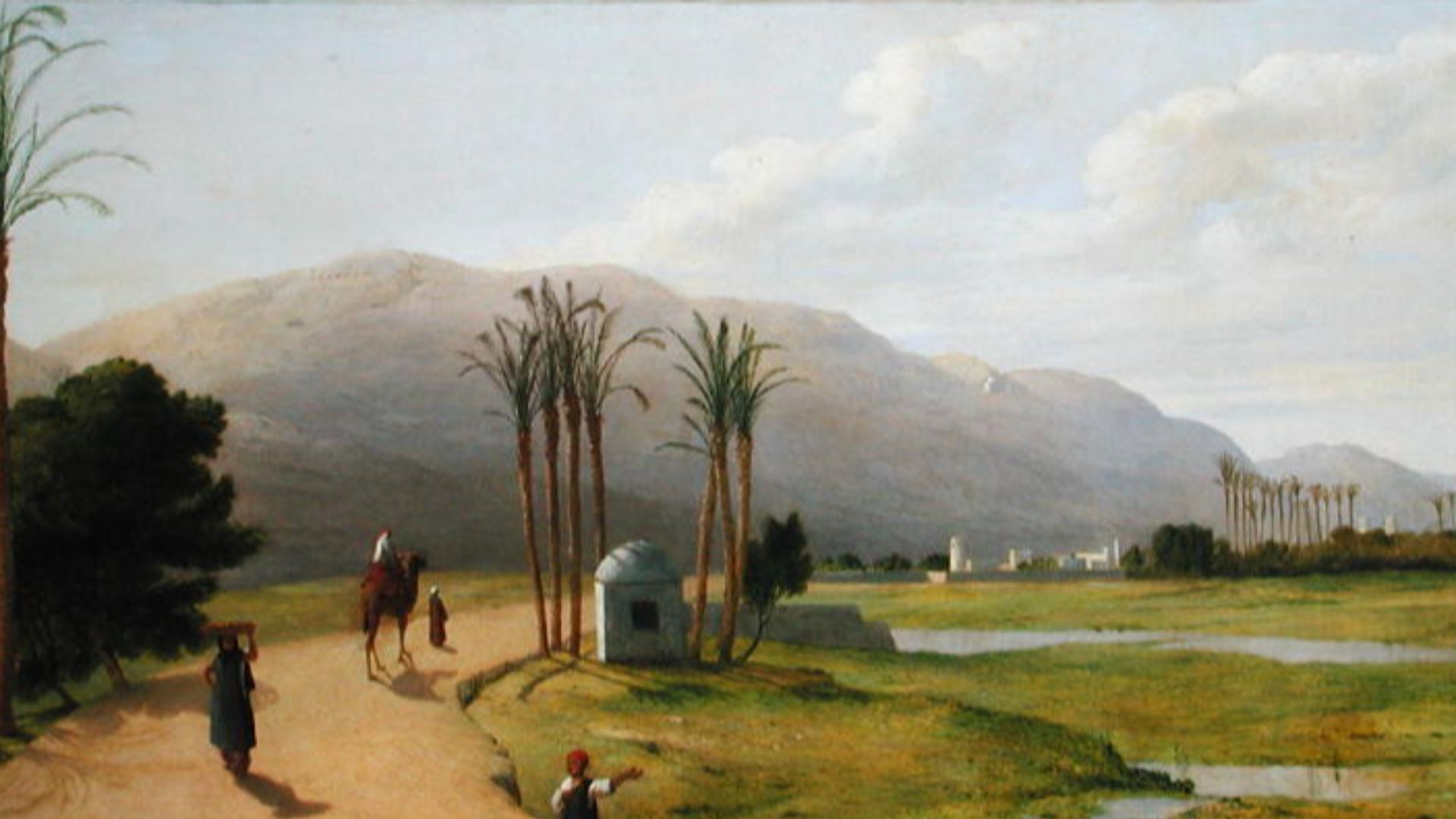 John Rogers Herbert, Wikimedia Commons
John Rogers Herbert, Wikimedia Commons
Linking Art And Identity
Idi’s painted coffins demonstrate how artistry and identity were intertwined. Every symbol and inscription reinforced her social role and spiritual journey. Through her tomb, Idi emerges as more than just a name in hieroglyphs. We see her through coffin texts, sculpture, and bone. She becomes a representative of an elite woman’s life in ancient Egypt.
Interpreting The Afterlife
The texts on Idi’s coffin guide her through the underworld, past trials and into eternal peace. These spiritual maps reflect Egyptian cosmology in action. Scholars are studying them to better understand religious thought of the time.
 Egypt.Papyrus.01.jpg: Hajor
derivative work: JMCC1 (talk), Wikimedia Commons
Egypt.Papyrus.01.jpg: Hajor
derivative work: JMCC1 (talk), Wikimedia Commons
A Woman Remembered
Thousands of years after she has passed, Idi’s name and story have returned to light. Her burial offers rare evidence of Middle Kingdom burial customs for women—and her rediscovery affirms the value of continued archaeological work in Egypt.
You May Also Like:
The Truth About The Curse Of King Tut's Tomb
Poland’s Royal Relics That Survived A World In Battle
Archaeologists Have Just Found An Egyptian Tomb That Rivals King Tut
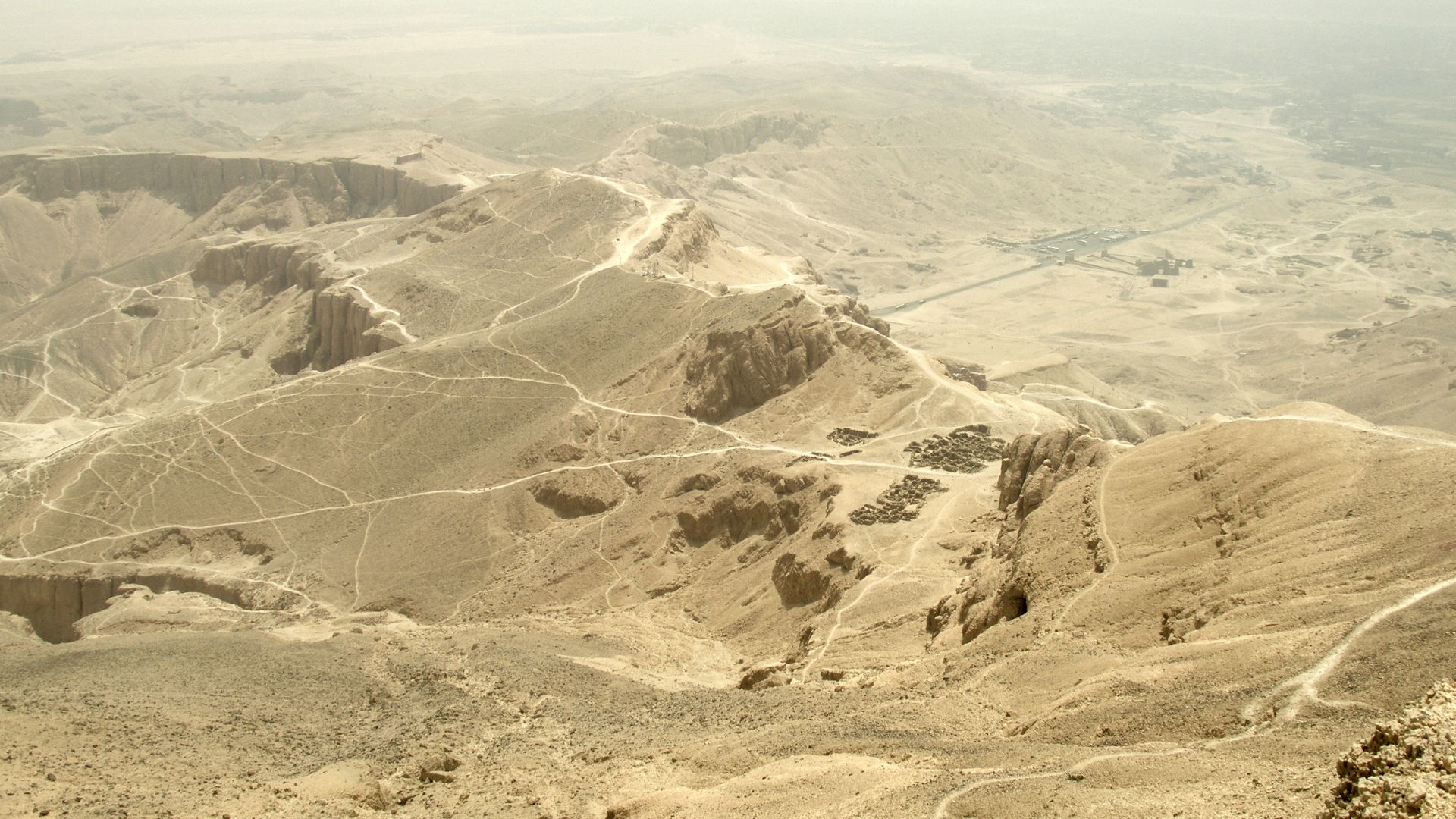 Vyacheslav Argenberg, Wikimedia Commons
Vyacheslav Argenberg, Wikimedia Commons

